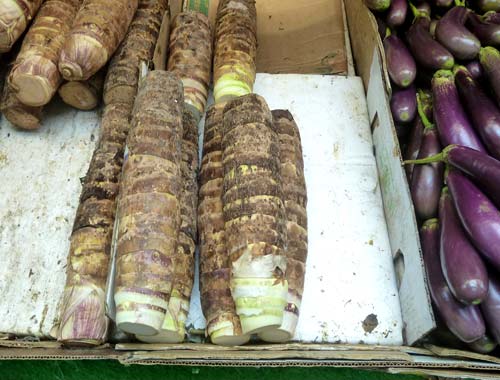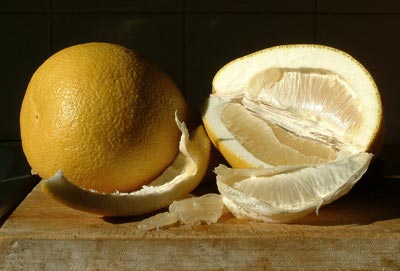
Taro. Colocasia. A plant grown both for its leaves and tuberous, potato-like roots, or corms. The roots, the flesh of which may vary from white to pink, have a delicate flavour and can be peeled and boiled, roasted, mashed, fried or included in a stew.e flesh of which may vary from white to pink, have a delicate flavour and can be peeled and boiled, roasted, mashed, fried or included in a stew.
Air potato. An intrusive, but one of the most widely consumed varieties of yam cultivated in the Pacific Islands, Asia and West Africa. Uncultivated versions may be bitter and even poisonous (as in Florida).
Air potato. An intrusive, but one of the most widely consumed varieties of yam cultivated in the Pacific Islands, Asia and West Africa. Uncultivated versions may be bitter and even poisonous (as in Florida).
Air potato. An intrusive, but one of the most widely consumed varieties of yam cultivated in the Pacific Islands, Asia and West Africa. Uncultivated versions may be bitter and even poisonous (as in Florida).
A pit in the ground in which a fire is lit and then lined with stones. In Fiji these are often rounded boulders. When the stones are hot, food is buried in the pit and left to cook. Dishes cooked this way include palusami, parcels of taro leaves saturated with coconut oil, onions, and sometimes tinned meat, or dalo (the taro plant), or cassava wrapped in banana leaves.

Pomelo. A citrus fruit similar in appearance to a grapefruit with one slightly pointed end. Once the thick skin is peeled, the segments need to have the tough leathery coating pulled away. Inside, the flesh can be deliciously sweet and juicy. It is better left for a few days after picking before it is eaten. There are pink and white versions. Is sometimes used in salads and savoury dishes.
Parcels of taro leaves saturated with coconut oil, onions, and sometimes tinned meat, often cooked inside the barbecue pit called a lovo.